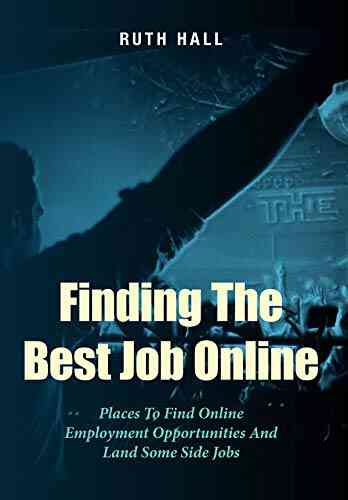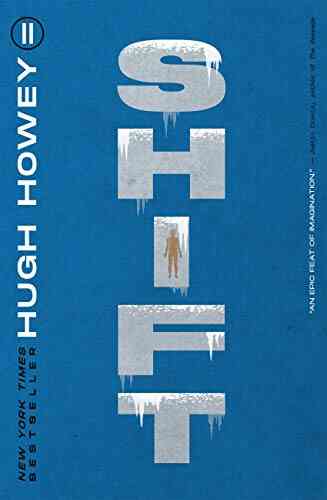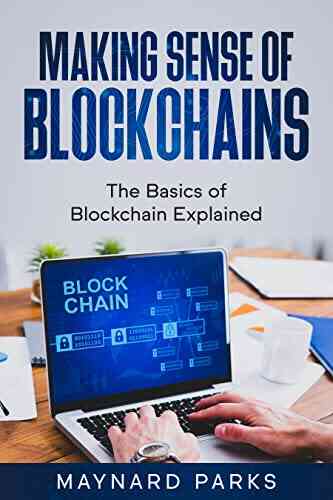Making Sense Of Blockchains: Decoding the Future of Technology

Blockchain technology has created quite a buzz in recent years. From its humble beginnings in the cryptocurrency world with the of Bitcoin, blockchains have evolved into a groundbreaking technology with far-reaching implications. Understanding the intricacies and potential of blockchains can be overwhelming at first, but fear not! In this comprehensive guide, we will unravel the mysteries of blockchains and explore their transformative power.
What is a Blockchain?
At its core, a blockchain is a decentralized digital ledger that records transactions in a transparent and immutable manner. The power of blockchains lies in their ability to create trust and establish transparency in a world that is increasingly interconnected. Unlike traditional central authorities, blockchains rely on a network of computers, known as nodes, to validate and confirm transactions. This distributed consensus mechanism ensures that no single entity has control over the entire network, making blockchains resistant to tampering and censorship.
The Building Blocks of Blockchains
Understanding how blockchains work requires diving into their components:
4.4 out of 5
| Language | : | English |
| File size | : | 2284 KB |
| Text-to-Speech | : | Enabled |
| Screen Reader | : | Supported |
| Enhanced typesetting | : | Enabled |
| Print length | : | 169 pages |
| Lending | : | Enabled |
1. Blocks
Blocks are the fundamental units of data in a blockchain. They contain a set of transactions, a timestamp, and a unique cryptographic hash that connects them to the previous block. This creates an unbroken chain of blocks, hence the name "blockchain." Each new block is added to the chain through a process called mining.
2. Mining
Mining plays a crucial role in securing the blockchain network. Miners utilize computational power to solve complex mathematical puzzles and validate transactions. Once a miner solves a puzzle, they add the verified block to the chain and receive a reward in the form of cryptocurrency. Mining ensures that the network operates in a decentralized and trustless manner.
3. Cryptography
Cryptography serves as the backbone of blockchain technology. It provides a secure way of verifying transactions, ensuring that they are authentic, and protecting the data from unauthorized access. Public-key cryptography, hash functions, and digital signatures are some of the cryptographic techniques employed in blockchains.
Applications of Blockchains Beyond Cryptocurrencies
While cryptocurrencies like Bitcoin initially popularized blockchains, the potential applications of this technology extend far beyond digital currencies:
1. Supply Chain Management
Blockchains can revolutionize supply chain management by providing end-to-end transparency and traceability. With a blockchain, businesses can track the movement of goods from the point of origin to the end consumer, reducing fraud, increasing accountability, and ensuring ethical sourcing.
2. Healthcare
Medical records are highly sensitive and require secure storage. Blockchains can provide a tamper-proof and decentralized system for storing and sharing healthcare data. Patients would maintain control over their records while allowing authorized healthcare providers access when needed, streamlining processes and improving patient care.
3. Voting Systems
Blockchain-based voting systems have the potential to enhance the integrity and transparency of elections. Immutable records of votes stored on a blockchain can eliminate voter fraud and ensure accurate results. Additionally, blockchain voting systems can enable citizens to verify that their vote was counted correctly while maintaining their anonymity.
Challenges and Potential Solutions
While blockchains offer tremendous potential, they also face several challenges:
1. Scalability
As more transactions are added to the blockchain, scalability becomes a major concern. Traditional blockchains, like Bitcoin's, have a limited capacity and are prone to congestion. However, innovative solutions like sharding and layer-two protocols are being developed to address these scalability issues and improve network efficiency.
2. Energy Consumption
Mining blockchains consume a significant amount of energy, leading to concerns about their environmental impact. Fortunately, efforts are underway to develop more energy-efficient consensus mechanisms, such as proof-of-stake, which require less computational power and reduce energy consumption.
3. Regulatory Frameworks
The decentralized nature of blockchains challenges traditional regulatory frameworks. Governments and policymakers worldwide are grappling with how to regulate this technology while balancing innovation and consumer protection. Striking the right balance is crucial in promoting the responsible adoption of blockchains.
The Future of Blockchains
Blockchains have the potential to reshape the world as we know it. As the technology matures, we can expect to see even more innovative applications across various industries. From decentralized finance (DeFi) to smart contracts and digital identity management, blockchains will continue to disrupt and revolutionize traditional systems. Embracing the possibilities offered by blockchains will be key in unlocking their full potential.
, blockchains are not just a passing trend but a foundational technology that will shape the future. Understanding how they work and their potential applications is crucial in navigating this new era. With the power to establish trust, increase transparency, and promote decentralization, blockchains have the potential to unlock unparalleled opportunities. So, embrace the revolution and join the movement towards a decentralized future!
4.4 out of 5
| Language | : | English |
| File size | : | 2284 KB |
| Text-to-Speech | : | Enabled |
| Screen Reader | : | Supported |
| Enhanced typesetting | : | Enabled |
| Print length | : | 169 pages |
| Lending | : | Enabled |
A blockchain is a distributed database that computer net- work nodes may access. A blockchain, like a database, stores information in digital form electronically. Blockchains are well known for their crucial role in cryptocurrency systems such as Bitcoin in maintaining a secure and decentral- ized record of transactions. The blockchain's uniqueness protects the correctness and security of a data record and generates confidence without the need for a trusted third party. The or- ganization of data differs dramatically between a standard da- tabase and a blockchain.
A blockchain stores data sets in groups of information called blocks. When a block's storage capacity is achieved, it is closed and joined to the preceding entire block, resulting in the blockchain, a data chain. All new information that comes after that freshly added block is combined into a newly formed block and then added to the chain once it is complete. A database normally organizes its data into tables, but as the name implies, a blockchain arranges its data into linked chunks (blocks). When deployed decentralized, this data structure generates an irreversible data timeline.
When a block is com- pleted, it becomes permanent and forms a part of this timeline. A specific time stamp is given when a block is added to the chain.
Blockchain is the ground-breaking database technology that powers all cryptocurrencies practically. Blockchain makes it nearly hard to attack or scam the system since it distributes identical copies of a database throughout the entire network. While bitcoin is now the most prominent use for blockchain, the technology can serve a very wide variety of applications. Blockchain, at its heart, is a distributed digital ledger that holds data of any form. For example, NFT ownership and Defi smart contracts may be recorded on the blockchain. While any traditional database may hold this type of data, blockchain is special because it is completely decentralized. Rather than being maintained in a single location by a centralized administrator (as in an Excel spreadsheet or a bank database),numerous identical copies of a blockchain database are stored on several computers distributed over a network. These individual computers are known as nodes. Using peer-to-peer nodes, the blockchain network stores public transactional information, commonly called "blocks," across several databases.
A 'digital ledger' is a term for this form of storage. In this ledger, the owner's digital signature authenticates each transaction and prohibits tampering with the ledger.
As a result, the digital ledger's information is incredibly secure. The digital ledger functions like a Google spreadsheet shared over a network for real-world purchases and transactions. The data is available for anybody to examine, but they cannot alter it.
Do you want to contribute by writing guest posts on this blog?
Please contact us and send us a resume of previous articles that you have written.




















Light bulbAdvertise smarter! Our strategic ad space ensures maximum exposure. Reserve your spot today!

 Jesus MitchellThe 12 Dukes of Christmas: A Regency Romance Collection Full of Holiday Magic
Jesus MitchellThe 12 Dukes of Christmas: A Regency Romance Collection Full of Holiday Magic
 Ronald SimmonsUnveiling the Epic Saga of Black Dagger: The Shadows, The King, Lover At...
Ronald SimmonsUnveiling the Epic Saga of Black Dagger: The Shadows, The King, Lover At...
 Stephen KingUnraveling the Dark Depths: A Stunning Adaptation from the Novella by Fyodor...
Stephen KingUnraveling the Dark Depths: A Stunning Adaptation from the Novella by Fyodor...
 Manuel ButlerGetting Over The Unavailable Man And Finding True Love: The Unavailable Man...
Manuel ButlerGetting Over The Unavailable Man And Finding True Love: The Unavailable Man...
 Sidney CoxThe River NHB Modern Plays: An Enthralling Exploration of Love, Mystery, and...
Sidney CoxThe River NHB Modern Plays: An Enthralling Exploration of Love, Mystery, and...
 Harold BlairThe Development Of The Sonnet: An Introduction to the Evolution of a Poetic...
Harold BlairThe Development Of The Sonnet: An Introduction to the Evolution of a Poetic...
 Bryce FosterThe Ultimate Artist Guide To Music Marketing: Boost Your Career and Increase...
Bryce FosterThe Ultimate Artist Guide To Music Marketing: Boost Your Career and Increase... Billy PetersonFollow ·9.2k
Billy PetersonFollow ·9.2k Stanley BellFollow ·7.2k
Stanley BellFollow ·7.2k Jim CoxFollow ·9.1k
Jim CoxFollow ·9.1k Caleb CarterFollow ·15.3k
Caleb CarterFollow ·15.3k John SteinbeckFollow ·19.2k
John SteinbeckFollow ·19.2k Caleb LongFollow ·10k
Caleb LongFollow ·10k Roland HayesFollow ·16.2k
Roland HayesFollow ·16.2k Dave SimmonsFollow ·7.5k
Dave SimmonsFollow ·7.5k

 Gage Hayes
Gage HayesUnveiling the Mysterious Terminus Peter Clines - A Master...
In the realm of...

 Andrew Bell
Andrew BellThe Touch Of Death: An Ennin Mystery 17 - Delve into the...
Japanese detective fiction has captivated...

 Damon Hayes
Damon HayesThe Thrilling World of Airborne: Tom Clancy Military...
When it comes to military novels, few authors...

 Steve Carter
Steve CarterThe Artist Way 25th Anniversary Edition: Ignite Your...
Do you feel a burning desire to express...

 Eugene Scott
Eugene ScottTop 10 Websites Offering Lucrative Side Jobs For Those...
Welcome to the world of freelance work and...

 Evan Hayes
Evan HayesThe Ultimate Black Girls Guide To Skin Care: Achieving...
For women of color, especially...

 Hank Mitchell
Hank MitchellMarried To The Alien Doctor Renascence Alliance: A Love...
Have you ever fantasized about what it...

 Brenton Cox
Brenton CoxDiscover the Enchanting World of My Surly Heart Poems by...
Have you ever been captivated by the...

 Chuck Mitchell
Chuck MitchellFrom Storm And Shadow Part Stormfae: A Thrilling Tale of...
HTML Format: Prepare yourself to...

 Deacon Bell
Deacon BellThe Extraordinary Story of Richard Sharpe And The...
In the annals of military history, few men...

 Devon Mitchell
Devon MitchellShift Silo Trilogy - A Captivating Journey into Hugh...
When it comes to...

 Gene Simmons
Gene SimmonsSnake IV Original Grace Gary Lemons
Snakes are fascinating...
4.4 out of 5
| Language | : | English |
| File size | : | 2284 KB |
| Text-to-Speech | : | Enabled |
| Screen Reader | : | Supported |
| Enhanced typesetting | : | Enabled |
| Print length | : | 169 pages |
| Lending | : | Enabled |








